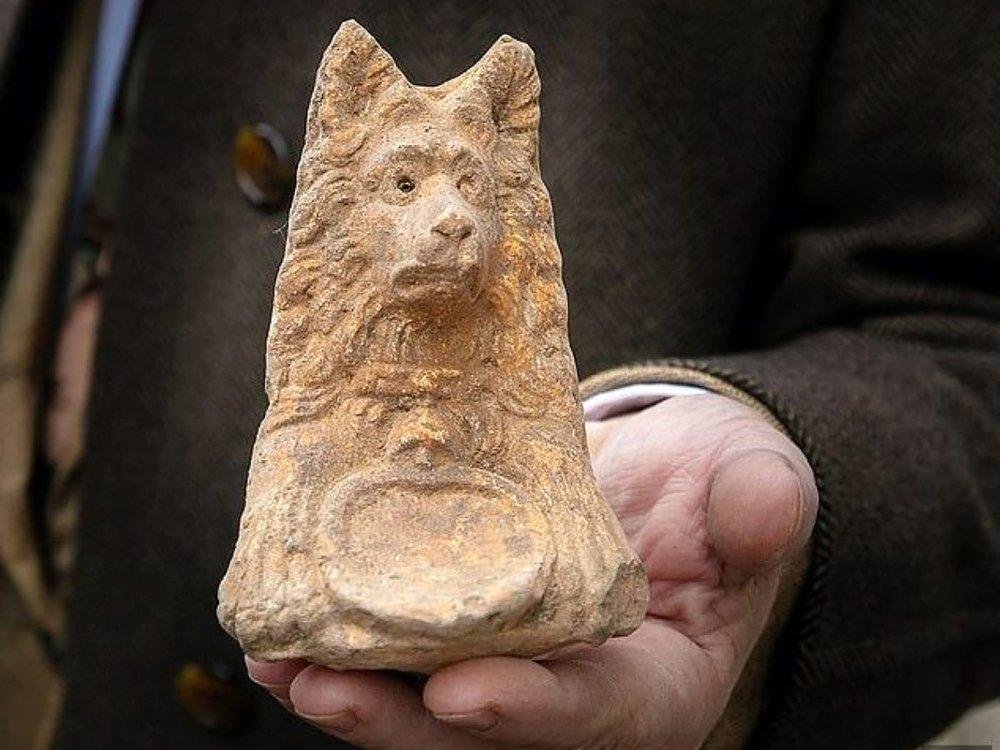A group of researchers consisting of osteoarchaeologists, archaeologists, and veterinarian scientists from Istanbul University-Cerrahpaşa, Atatürk University, and University of Environmental and Life Sciences, ul. Kożuchowska, have discovered proof of early Roman practices of breeding dogs with flat faces.
The team investigated the remains of a dog discovered in a tomb located in present-day Turkey, within the ancient city of Tralleis. The dog was likely buried with its owner, as per the report published in the Journal of Archaeological Science: Reports.
The remains of the dog were initially discovered in 2007 but were considered too fragile to be studied and were kept in safe storage instead.
 A terracotta figurine of a dog at an excavation of one of Rome’s oldest streets. Credit: Italian Ministry of Culture
A terracotta figurine of a dog at an excavation of one of Rome’s oldest streets. Credit: Italian Ministry of Culture
However, in 2021, the team in question retrieved the bones and began studying them carefully to gather more information about the dog.
After their analysis, the researchers found that the dog belonged to a brachycephalic breed, which includes flat-faced dogs like pugs, chow chows, and boxers. The team discovered that the dog had a brachycephalic skull similar to that of a French Bulldog, which is a unique find.
The researchers used radiocarbon dating to determine that the dog was between 1,942 and 2,118 years old, indicating that the Romans may have been the first to deliberately breed dogs with short noses.
The discovery of a brachycephalic breed in Tralleis is significant because, until now, only one similar breed had been found in Pompeii, which is in the Roman Empire.
This is also the oldest brachycephalic breed ever discovered. The researchers compared the measurements of the dog’s skull with those of modern breeds and concluded that it was most similar to a French bulldog and least similar to a boxer.
The researchers note in the study that the analysis of the Tralleis dog shows that it was a pet-like dog that resembled small French bulldogs.
The researchers also determined that the dog was smaller than they originally anticipated and had not yet reached adulthood before its death.
Analysis of the dog’s teeth provided insights into its life, suggesting that it did not experience any harsh or cruel treatment, which is sometimes evident in skeletal remains of dogs.
This finding supports the idea that this dog may have held a higher social status and was possibly a beloved companion of the deceased.
The researchers speculate that the dog might have been included in the deceased’s final wishes for a shared burial.
More information: Vedat ONAR et al, (2023). Skull of a brachycephalic dog unearthed in the ancient city of Tralleis, Türkiye, Journal of Archaeological Science: Reports. DOI: 10.1016/j.jasrep.2023.103969





